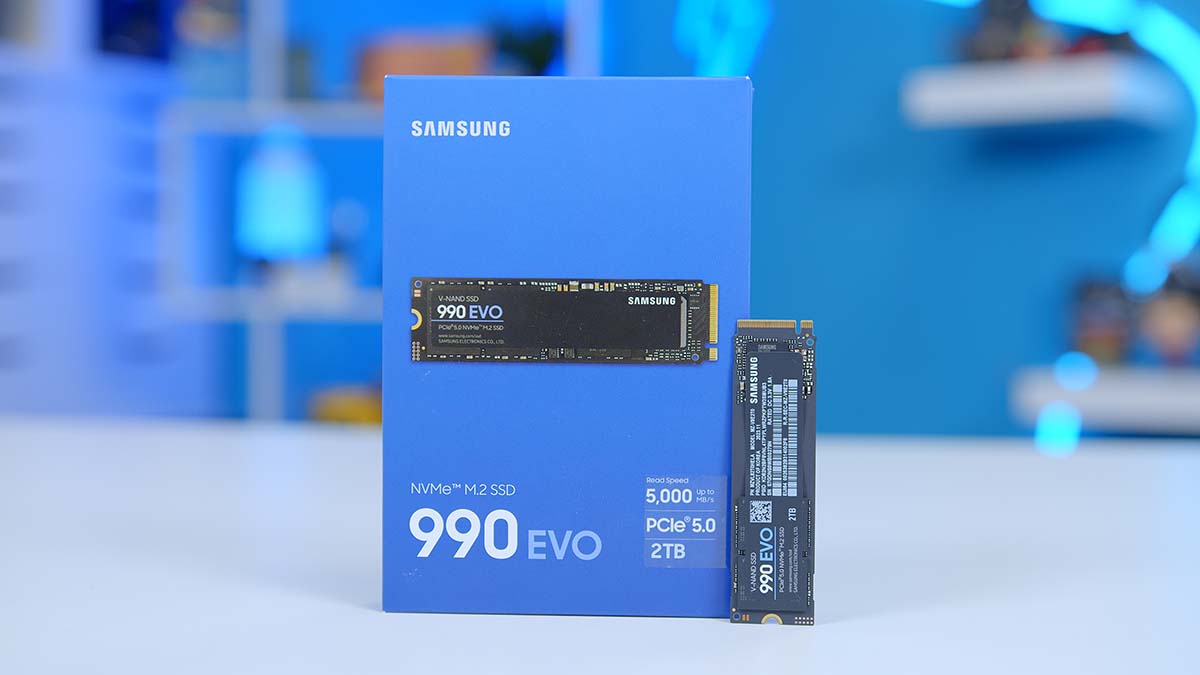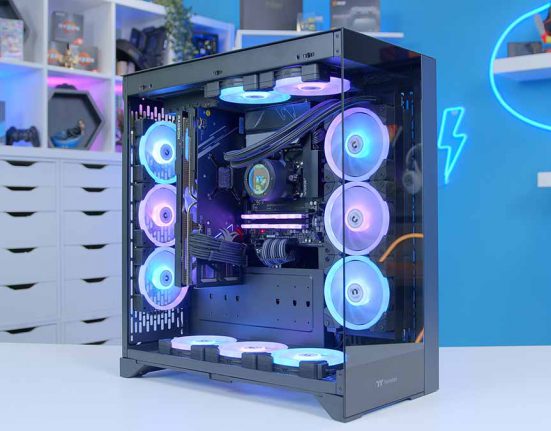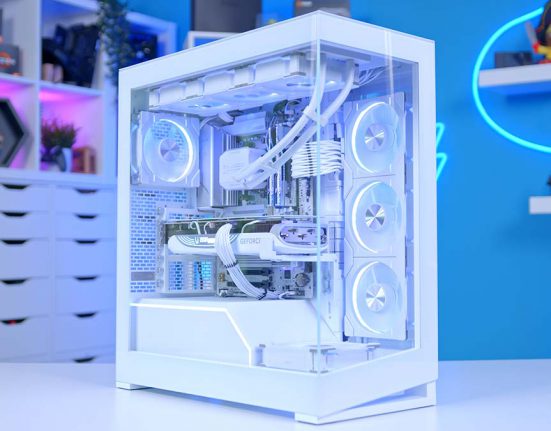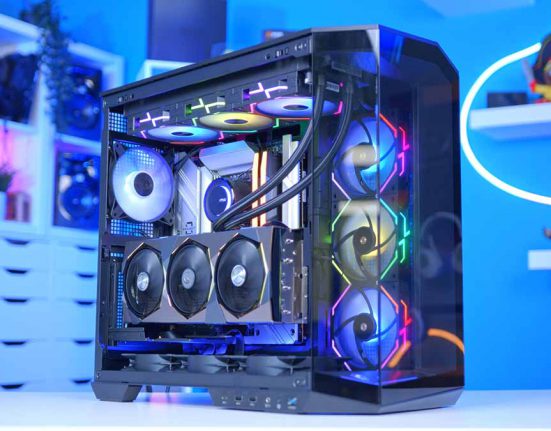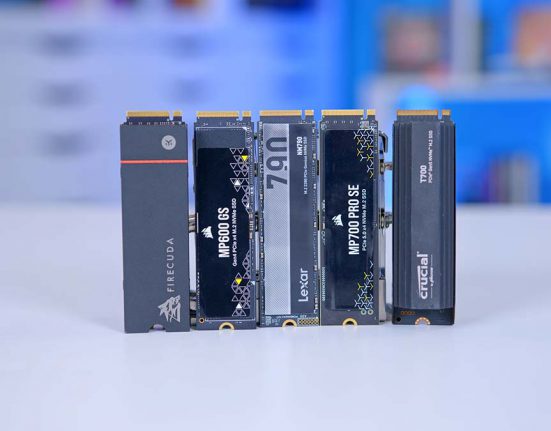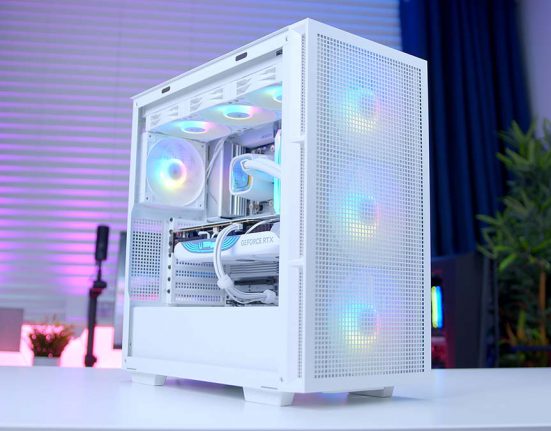Samsung looks to alleviate a number of issues within the current Gen5 SSD market. Designed to keep a lid on temperatures whilst still holding strong on the performance front, thanks to a drop in the number of PCI-E lanes used from 4 down to 2, is this the Gen5 SSD we’ve all been waiting for?
Gen5 SSDs have been saturating the market over time, with a multitude of manufacturers dipping their toes into this space with new options. But with a shaky market reception, mainly due to thermals, the Gen5 SSD market sits in an interesting state, with plenty of potential buyers steering clear and opting for cheaper and cooler Gen4 options. This, though, is where the Samsung 990 EVO comes in, set to bridge the gap and offer a potential answer to the problem many have been having.
But is the Samsung 990 EVO worth picking versus existing Gen4 and Gen5 options? In this review, we’ll be answering this very question with an assessment of the Samsung 990 EVO’s performance and value.
Buy the Samsung 990 EVO on:
Specifications
On paper the Samsung 990 EVO looks to be a relatively capable drive, offering up to 5000MB/s on the reads, and 4200MB/s on the writes. This is down to the fact that this drive uses 2 of the 4 available PCI-E lanes, which also keeps temperatures down too.
Your M.2 slots on your motherboard typically will offer four PCI-E lanes for your SSD to use, which will allow your drive of choice to reach the best speeds it possibly can. However, Samsung has changed the narrative by limiting the amount of lanes that the drive can use, to 2. The onboard controller limits the PCI-E lane usage in an attempt to kerb thermals.
By doing this, the Samsung 990 EVO has a lower throughput (which means its overall read and write speeds are reduced), but thermals are much more tolerable.
| Specification | Samsung 990 EVO |
|---|---|
| PCI-E Generation | Gen5 |
| Capacity | 1TB, 2TB |
| Sequential Read Speed | 5000MB/s |
| Sequential Write Speed | 4200MB/s |
| Warranty | 5 years |
| Endurance | 1TB: 600TBW 2TB: 1200TBW |
| Form Factor | M.2 2280 |
Buyers can choose between two different capacities 1TB or 2TB, though we might see a potential 4TB option in the future. This drive comes with a relatively standard 5 year warranty, and sports an M.2 2280 form factor.
Admittedly, it would be nice to see a heatsink variant of this particular drive, as this would spice up the design a little bit. But due to the stronger thermal capability it doesn’t necessarily need a heatsink.
Design
The 990 EVO does what it says on the tin without the need for the additional design bells and whistles found on other SSD options. The reason why the Samsung 990 EVO doesn’t feature a heatsink variant, is because it plainly doesn’t need one.
Using 2 PCI-E lanes instead of 4 reduces the overall throughput of the drive, but allows the NAND flash chips to constantly sit at their rated speed while maintaining lower thermals in comparison to full fat Gen5 drives. We recommend checking out our thermals section for an explanation of our benchmarks.
Whilst this design approach won’t be for everyone, for those looking for a capable drive to tuck away under a motherboard heatsink offering solid performance and strong thermals, the Samsung 990 Evo looks to be an interesting option to consider.
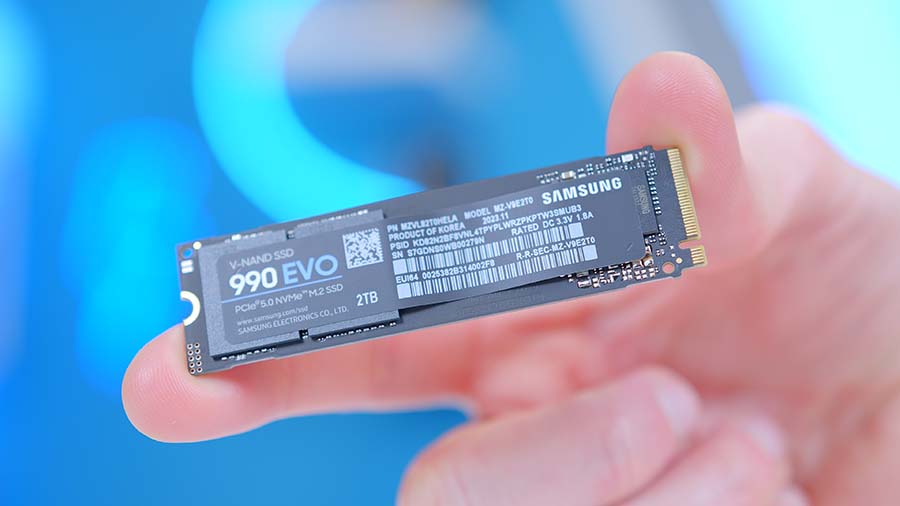
Gen4 vs Gen5 SSDs – Key Differences
The Samsung 990 EVO is a slightly odd amalgamation of Gen4 performance with a Gen5 price tag, so it makes sense to briefly discuss the differences between these PCI-E generations. Gen4 drives are some of the most affordable options on the market, and are a perfect pickup for the budding budget PC gamer looking for more storage. 1TB drives generally sit below the $100 mark, while 2TB Gen4 SSDs generally cap out at the $150-$160 mark.
In terms of performance, Gen4 SSDs were able to max out around the 7-8GB/s mark, with drives like the Firecuda 530 or Samsung’s very own 990 Pro easily hitting this metric.
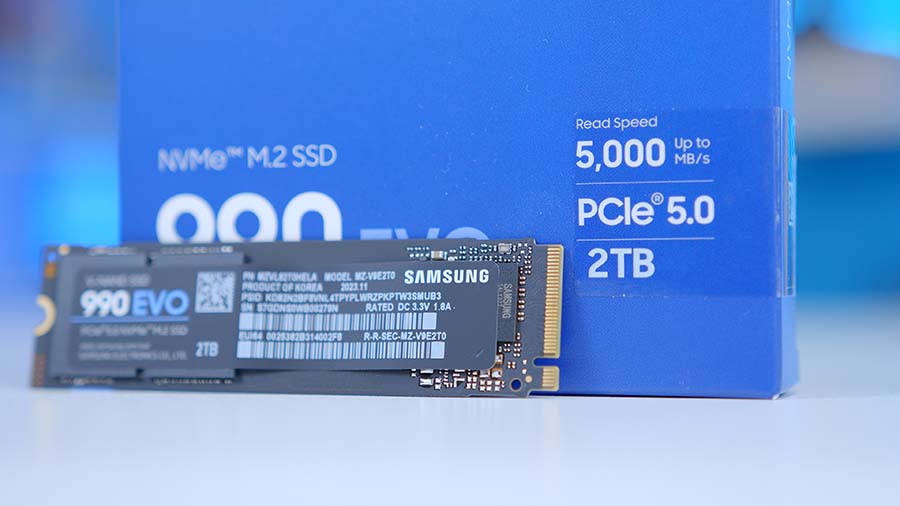
Gen5 drives on the other hand are generally more expensive than their Gen4 counterparts, starting around the $160 mark for just a terabyte of storage. These options are not geared towards your average buyer, with the target demographic pointing more towards high-end systems and enthusiasts. On the performance front, Gen5 drives double the theoretical bandwidth allowing you to reach 14-15GB/s on the read and write speeds.
The other notable difference is thermals. Gen5 drives that use the full four PCI-E lanes need to have a dedicated heatsink to keep the NAND flash memory from overheating.
Thermals
Thermal performance has been the big point of contention in the Gen5 SSD market, purely because the latest drives are reaching very high temperatures even with dedicated heatsinks. However, Samsung’s PCI-E lanes solution minimises the thermal output by reducing the overall throughput of the 990 EVO.
By doing this, the NAND flash chips can sit at a much more comfortable temperature of around 50 degrees. This is obviously still hot, but because the average temperature is lower in comparison to other Gen5 options, it can throttle read and write speeds continuously and also doesn’t require a heatsink.
The 990 EVO maintained this temperature during our CrystalDiskMark tests which was pretty impressive. The thermal solution that Samsung have utilised here is definitely a strong point of this drive.
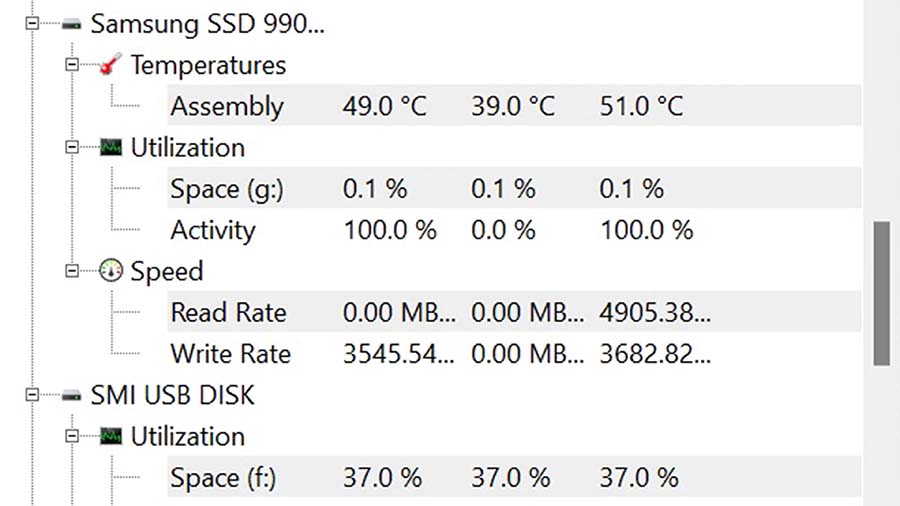
Read & Write Performance
To see how the Samsung 990 EVO performs we fired up CrystalDiskMark. This software puts an artificial load on the drive, testing the sequential read and write speeds. This gives us an indicator of how the drive will perform in a real-life setting when you’re constantly reading and writing to the drive within games or other applications.
Straight off the bat, you’ll see that the Samsung 990 EVO performed pretty well, with the read speeds sitting slightly above the rated 5000MB/s specification. The write speeds however weren’t that close to the advertised performance. Samsung notes that the rated sequential write speeds can reach up to 4200MB/s. While the 4059MB/s was somewhat close, this isn’t really within the margin of error for what we’d expect.
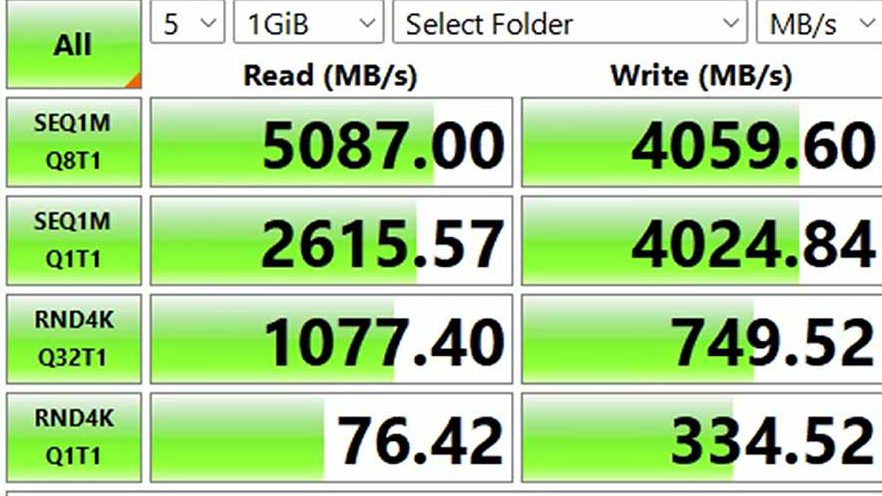
To make sure that our results were accurate, we ran a few more tests with CrystalDiskMark to validate our readings. Our second test achieved pretty similar results across the read and writes. The read speed sat at 5080MB/s, with writes jumping up to 4088MB/s which was slightly higher in comparison to our first benchmark run.
Again, our benchmarking speeds were lacking in comparison to the rated write capabilities. We’re missing out on about 110MB/s on the writes. Ultimately this isn’t going to be visibly negligible across applications, but for those that need strong read and write speeds, the performance really does matter here.
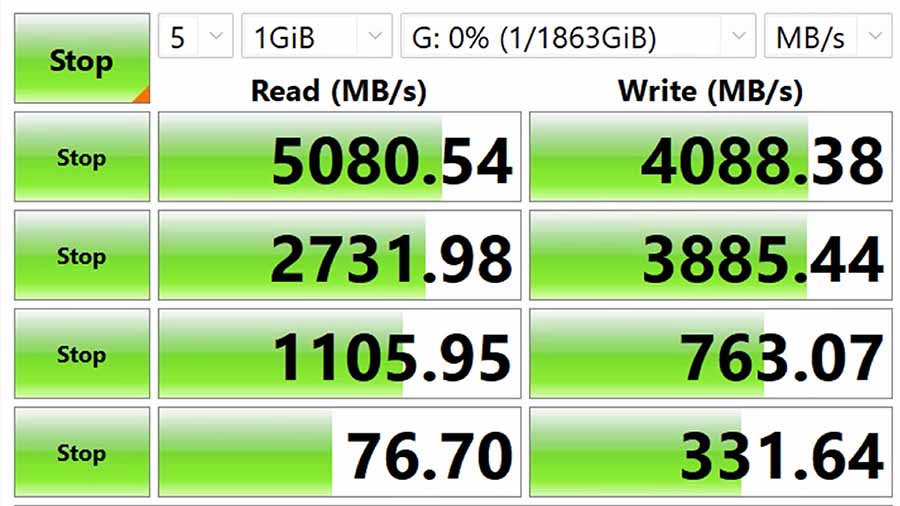
Our final CrystalDiskMark benchmark saw considerably worse performance on the writing capabilities. We’ve marked this result down as a slight anomaly, purely because our other results showed that the 990 EVO was more than capable of hitting 4000MB/s. However, this does indicate that there is some volatility on the write speeds, primarily because it isn’t able to hit its rated speeds.
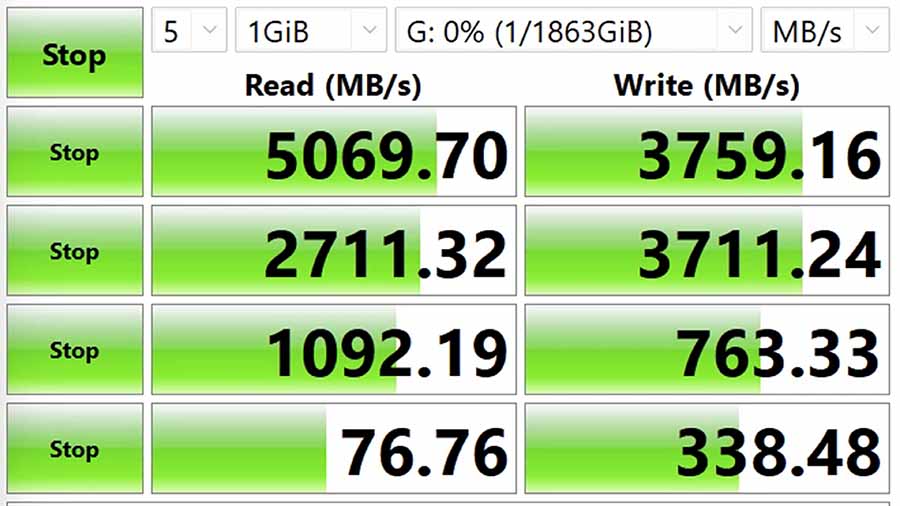
Unfortunately, the bad news doesn’t end here. Compared to the other SSDs we’ve tested, the Samsung 990 EVO is, unfortunately, one of the worst SSDs on the market regarding read and write speeds. While we understand that dropping two PCI-E lanes is a solid attempt to relieve thermal stress, this results in the 990 EVO standing out as an over-expensive Gen5 SSD that effectively offers Gen4 speeds.

Conclusion
Samsung 990 EVO 2TB
Product Name: 990 EVO
Brand: Samsung
-
Design
-
Thermals
-
Performance
-
Value For Money
Summary
Samsung’s 990 EVO SSD solves the issues of Gen5 thermals while hindering its own performance straight out of the gate. This comes down to the fact that the two PCI-E lanes that the 990 EVO uses results in much weaker read and write speeds that are closer to Gen4 SSD capabilities, despite the 990 EVO being a Gen5 option. While I do think the thermal solution is a good idea, the weaker performance does not justify the high price point that the 990 EVO comes in at. For this reason, the 990 EVO is a drive that we wouldn’t advise picking up, as there are competitively priced Gen4 drives that will offer similar, if not better performance.
Pros
✅ Thermals
✅ Power draw
✅ Five year warranty
Cons
❌ Expensive
❌ Gen4 speeds
❌ Niche use-case


